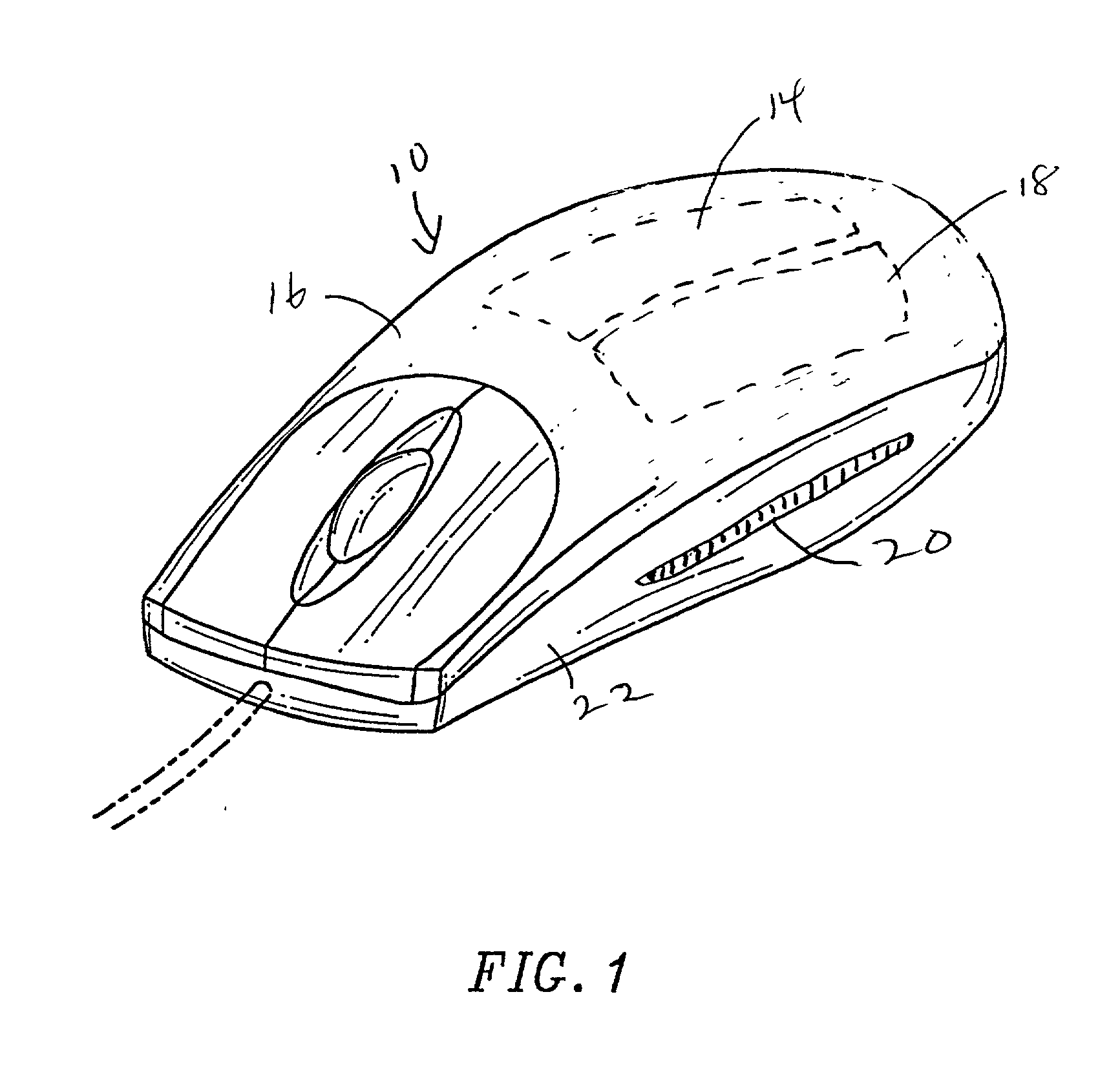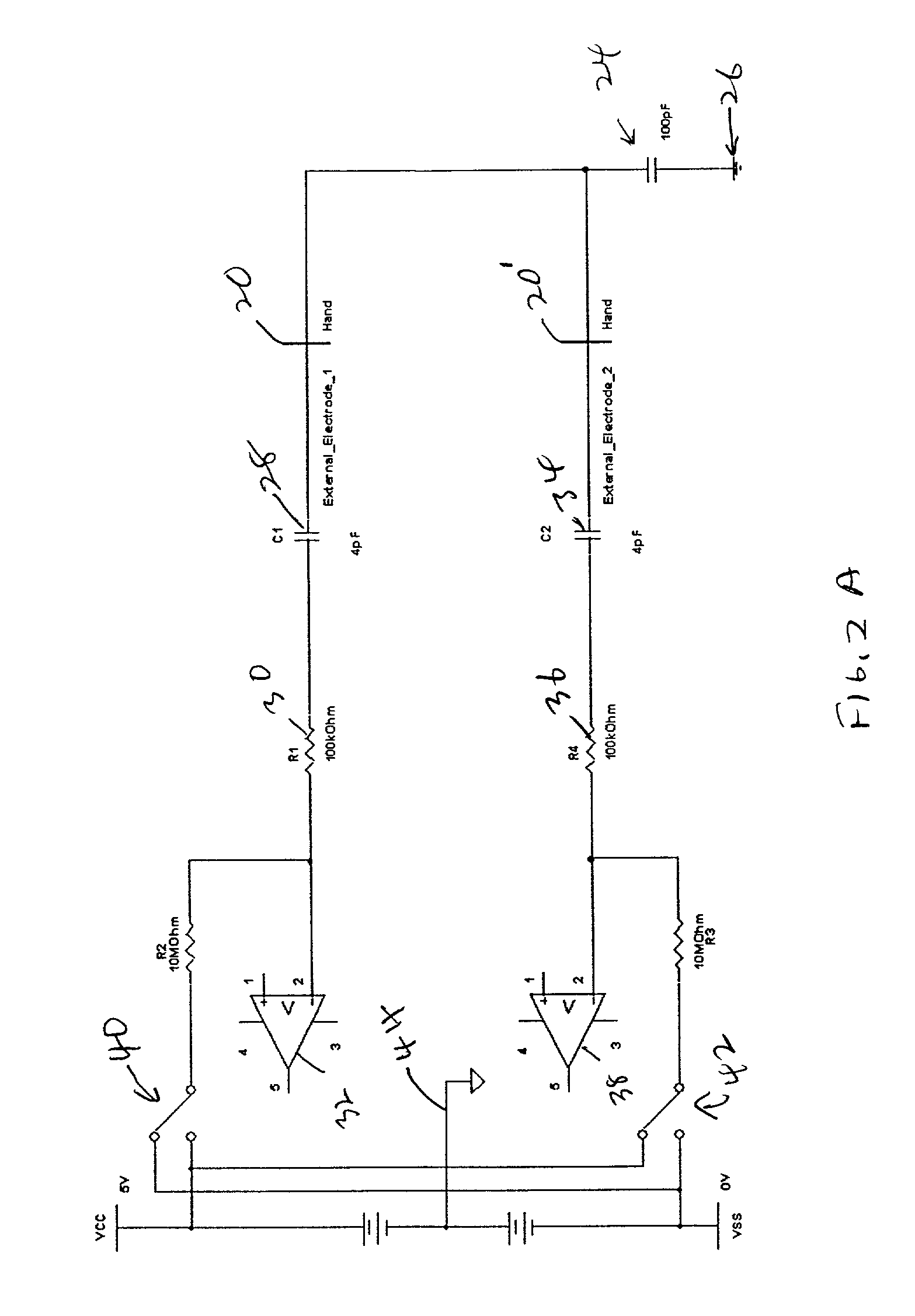Input device with capacitive antenna
a capacitive antenna and input device technology, applied in the field of input devices, can solve the problems of requiring a very small amount of power, requiring a rather power-hungry task, and a less effective approach, and achieve the effect of minimizing the capacitance of the antenna of the user's hand and saving power
- Summary
- Abstract
- Description
- Claims
- Application Information
AI Technical Summary
Benefits of technology
Problems solved by technology
Method used
Image
Examples
Embodiment Construction
[0023] FIG. 1 illustrates a mouse 10 having a top housing cover 16 beneath which, in phantom, are shown sheet electrodes 14 and 18. Additionally, an exposed electrode 20 is shown on a side 22 of the mouse. A similar electrode can be mounted on the other side, not shown. The electrodes 14, 18, or / and 20, are connected to a capacitive detection circuit for detecting when a hand is touching or in close proximity to those electrodes.
[0024] FIG. 2A illustrates, at a high level, the operation of the capacitive detection circuit. FIG. 2A illustrates a direct connection from the hand to the detection circuit, such as through exposed electrode 20 and a corresponding second electrode 20'. When the hand touches these, the capacitance of the body 24 to an earth ground 26 is connected in series with the electrodes. As shown, first electrode 20 is connected through a capacitor 28 and a resistor 30 to one input of a comparator 32. Similarly, the second electrode 20'is connected through a capacitor...
PUM
 Login to View More
Login to View More Abstract
Description
Claims
Application Information
 Login to View More
Login to View More - R&D
- Intellectual Property
- Life Sciences
- Materials
- Tech Scout
- Unparalleled Data Quality
- Higher Quality Content
- 60% Fewer Hallucinations
Browse by: Latest US Patents, China's latest patents, Technical Efficacy Thesaurus, Application Domain, Technology Topic, Popular Technical Reports.
© 2025 PatSnap. All rights reserved.Legal|Privacy policy|Modern Slavery Act Transparency Statement|Sitemap|About US| Contact US: help@patsnap.com



